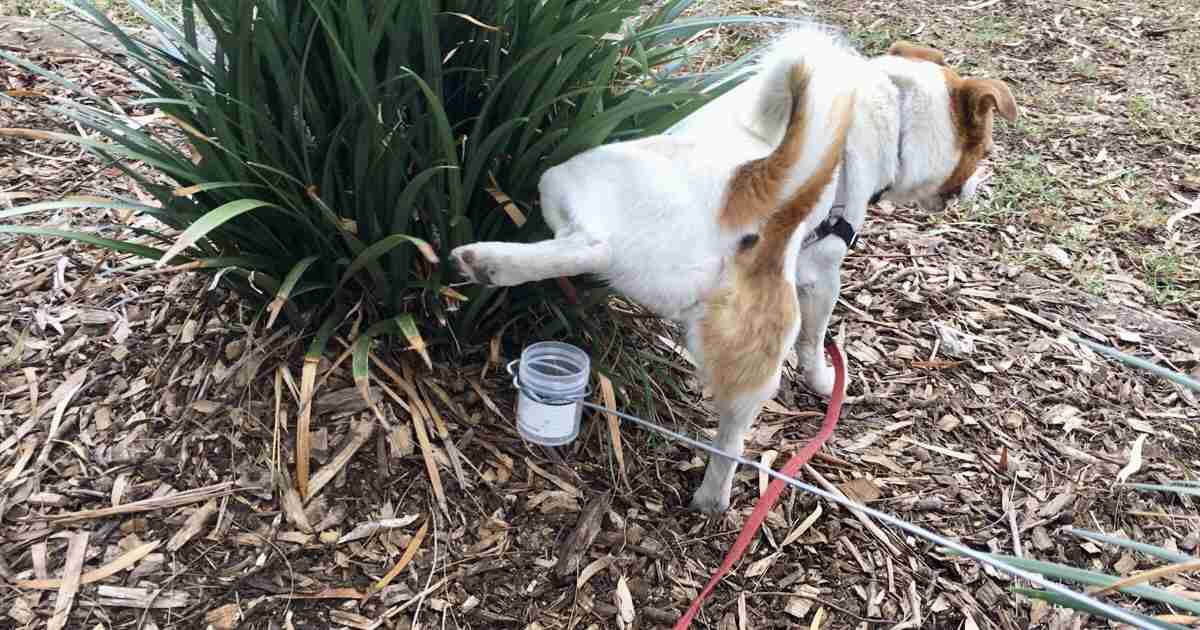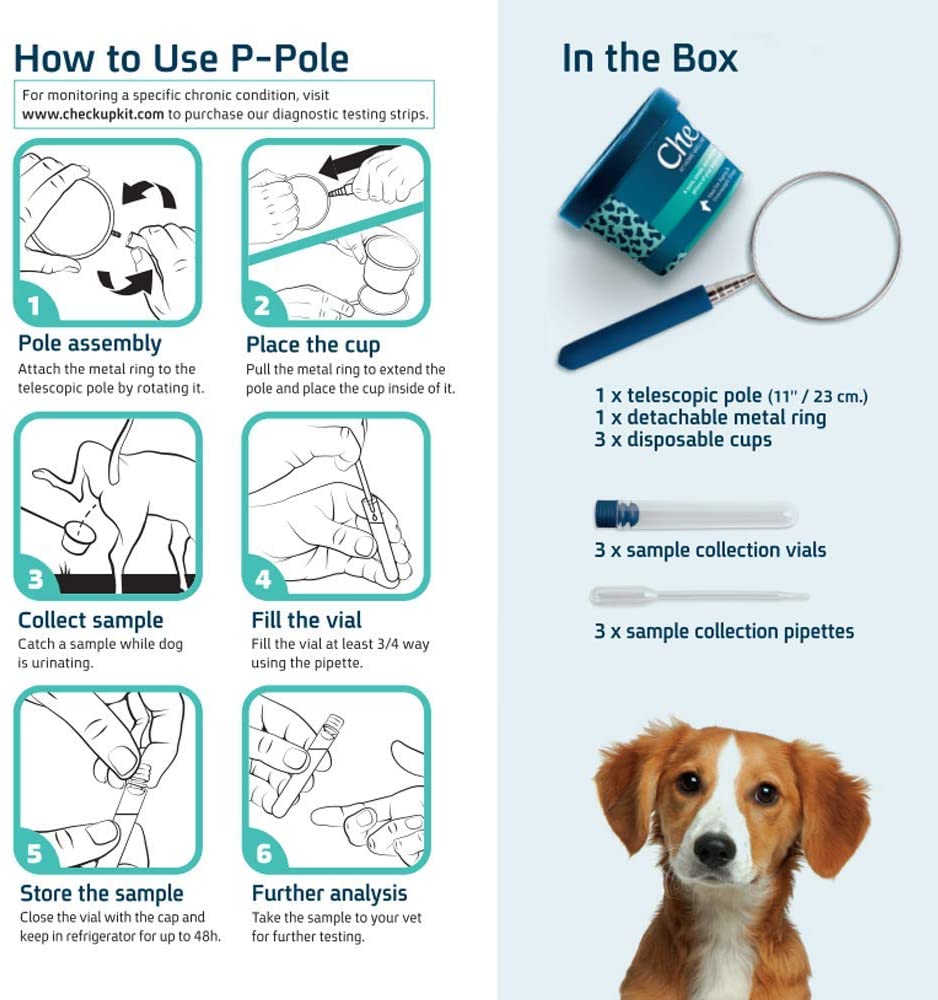Collecting a urine sample from your dog may seem tricky. But with the right approach, it’s quite manageable.
This task is often essential for diagnosing health issues. Dogs, like humans, need regular health checks. A urine test can reveal a lot about their health. From kidney function to potential infections, these tests offer valuable insights. Proper collection ensures accurate results.
Many pet owners feel unsure about how to start. But don’t worry, it’s simpler than it seems. With some patience and preparation, you can collect a clean sample at home. This guide will walk you through the steps. You’ll learn the tools you need and how to handle your dog during the process. Soon, you’ll be ready to assist your vet with ease. Let’s dive into the details.
Preparing For Collection
Gathering a dog’s urine sample involves patience and a clean container. Ensure your dog is relaxed, then use a shallow cup to catch the urine mid-stream. Early morning is often ideal for accurate results.
Gathering Supplies
Collect all the necessary supplies for the task. A clean container is essential. Choose one with a lid to avoid spills. Make sure it is sterile to keep the sample pure. A pair of rubber gloves can be helpful. They keep your hands clean. Have paper towels ready. They can wipe any mess. A plastic bag is useful too. It helps carry the sample safely.
Choosing The Right Time
Timing is very important. Choose a moment when your dog is relaxed. Early morning is a good choice. Dogs often urinate then. Watch your dog closely. Wait for signs of needing to pee. A walk might help. Exercise can prompt urination. Be ready with your supplies. Act quickly when your dog starts to pee. Collect the sample in the container. Be gentle to not scare your dog.

Credit: www.amazon.com
Understanding Dog Behavior
Dogs show signs when they need to pee. They might sniff the ground or circle. Tail wagging can mean excitement or need to go outside. Watch for restlessness or pacing. These signs mean a potty break is needed. Understanding these signs helps in collecting samples.
Predicting a dog’s next move is important. Dogs follow routines. They might go to their favorite spot to pee. Anticipate the moment when the dog stops moving. That’s your cue to get ready. Quick action is key for sample collection.
Choosing Collection Method
Free catch is a simple way to collect urine. You don’t touch the dog. Use a long stick with a cup at the end. Wait for your dog to pee. Slip the cup under the stream. Be careful. Dogs can be shy during this process. Stay calm and patient. Reward your dog with a treat. Make it a fun experience. Practice makes perfect.
Choose a clean container for the sample. A plastic cup works well. Ensure it is dry before use. Keep it steady during collection. Avoid spilling the urine. Cover it with a lid after collection. Label the container with your dog’s name. Store it in a cool place. Take it to the vet quickly. Fresh samples give the best results.
Positioning The Dog
Dogs can feel nervous during sample collection. To help, speak softly to your dog. Pet gently to show love and care. If your dog likes treats, offer a small snack. This can make them feel safe and happy. A calm dog is easier to handle. Deep breaths help you stay calm too. Dogs feel your energy. So, stay relaxed.
Place your dog on a leash. This helps you guide them easily. Stand beside your dog, not in front. Use a wide container to catch the urine. Hold it close to the ground. Patience is key. Stay still and wait. Don’t rush or force the dog. Your calm behavior helps the dog stay still.
Executing The Collection
Gather the right tools first. Use a clean container with a lid. A shallow dish can also work. Wait until your dog is ready to pee. Be patient. Follow your dog outside. Hold the container under the stream of urine. Try not to startle your dog. Move slowly and gently. Collect enough urine to fill the container. Seal it tightly after collection. Wash your hands well. Label the container with your dog’s name. Note the time of collection. Store in a cool place until delivery.
Some dogs may feel shy. They might not pee right away. Stay calm and wait patiently. Try again later if needed. Ask someone to help if you can. They can distract your dog. Use treats or toys for encouragement. Dogs get nervous sometimes. Speak softly to reassure them. Practice makes it easier. With time, both you and your dog will be more comfortable.

Credit: www.walkervillevet.com.au
Ensuring Sample Quality
Use a clean container to collect the urine. This helps keep the sample pure. Wash your hands before and after handling the sample. This stops germs from spreading. Keep the container away from dirt. This prevents unwanted particles from mixing in. Make sure the dog urinates directly into the container. This reduces the chance of contamination. Avoid touching the inside of the container at all times.
Store the urine sample in a cool place. A refrigerator is best. This keeps the sample fresh. Use a sealable container to avoid spills. Label the container with the time and date. This information is important for tests. Do not store the sample for too long. Use it for testing soon. If you delay, the sample might spoil.
Post-collection Care
After collecting the urine sample, it’s important to reward your dog. Give a treat or praise to show your dog they did well. This will make them feel happy and encourage cooperation next time. Positive reinforcement builds trust and makes future collections easier. Spend a few minutes cuddling or playing with them. This helps to strengthen the bond between you and your dog. A happy dog means a stress-free collection process.
Keep an eye on your dog’s health after the sample collection. Look for any changes in their behavior. Changes might include drinking more water or peeing more often. Noticing early signs can help in seeking medical advice quickly. If your dog seems unwell, contact the vet. Regular health checks ensure your dog stays healthy. Monitoring health is key in keeping your dog safe and happy.

Credit: drjudymorgan.com
Consulting A Veterinarian
Veterinarians know a lot about dog health. They can help you. It’s important to ask them when your dog is sick. They will tell you if a urine sample is needed. Sometimes, dogs need special tests. The vet will explain why. They can also show you the right way to collect urine.
Dogs show signs when they are unwell. Look out for changes in their behavior. Frequent urination or accidents inside are signs. If your dog seems thirsty all the time, it might need help. Other signs include blood in urine or straining. These signs mean you should contact a vet. Vets know what is best for your dog.
The vet will check the urine. They look for strange things in it. Sometimes, the urine might have crystals. It might show signs of infection. The vet explains what the results mean. They tell you if your dog needs medicine. They help you understand the next steps. Always listen to your vet’s advice for your dog’s health.
Frequently Asked Questions
What Is The Easiest Way To Get A Urine Sample From A Dog?
Use a clean container or ladle to collect urine midstream while the dog urinates. Approach calmly and quietly.
How Much Dog Urine Is Needed For A Sample?
A dog urine sample typically requires about 10-15 ml. Ensure it’s collected in a clean container. Properly sealed samples prevent contamination, ensuring accurate test results. Always consult your vet for specific guidelines related to sample collection. Regular checks help monitor your dog’s health effectively.
What Is The Major Drawback Of Collecting Urine By Cystocentesis?
Cystocentesis can cause bladder trauma or bleeding, leading to inaccurate test results. It requires skilled personnel and proper equipment to minimize risks. Also, it may induce stress or discomfort in the animal, affecting sample quality. Always weigh the benefits against potential drawbacks before choosing this method.
Is It Painful To Get Urine Sample From Dog?
Collecting a urine sample from a dog is generally not painful. Use a clean container to catch urine midstream. Approach calmly to reduce stress. If unsure, consult your vet for guidance.
Conclusion
Collecting a urine sample from your dog can be simple and stress-free. Always stay calm and patient. Use a clean container. Timing is crucial; morning samples are best. Reward your dog with treats afterward. Practice makes perfect, so don’t be discouraged.
Seek help if needed; vets can guide you. Understand your dog’s behavior. This helps in collecting the sample easily. Remember, your patience ensures your dog’s comfort. Keep your vet informed with accurate samples. Your efforts help in maintaining your dog’s health.
Stay positive and keep trying. Your furry friend relies on you.

